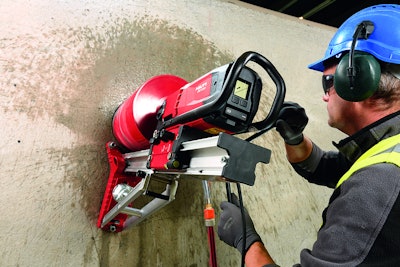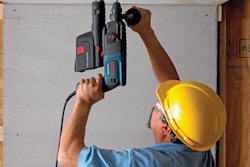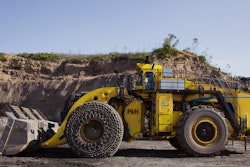 Tools like the water spray system on Hilti’s DD 250 concrete coring saw will help contractors stay within OSHA’s silica dust regulation. Photo: Hilti
Tools like the water spray system on Hilti’s DD 250 concrete coring saw will help contractors stay within OSHA’s silica dust regulation. Photo: HiltiWith not much more than two months to go, the Occupational Safety and Health Administration is putting the brakes on its crystalline silica standard for the construction industry.
Enforcement of the rule (OSHA 1926.1153 Respirable Crystalline Silica Standard) was scheduled to take effect June 23. OSHA will delay that date to September 23. The ruling specified how much breathable silica-containing dust would be allowed on any jobsite and required construction companies to take action to reduce that dust if it exceeded the limit.
The primary focus of the rule is on applications involving concrete or stone sawing, drilling, jackhammering, milling, crushing and grinding; but also includes brick manufacturing and hydraulic fracturing or fracking. Table 1 in the OSHA guidelines prescribes two methods of controlling the dust—wet processes where water keeps dust down, or vacuum assisted methods where a vacuum attachment is placed on or close to the cutting or drilling activity.
At the World of Concrete this year, the portable power tool industry was ready with a full range of tools and accessories to enable contractors to meet the new requirements. Companies like Hilti, Bosch, Skil, Makita and DeWalt showed a full range of new tools with built-in dust suppression technology and aftermarket adaptors for older cutting and drilling tools. So, the tools are available now and they’ve been extensively shown to the contractor community and the press. So why the delay?
According the OSHA’s press release “additional guidance is necessary due to the unique nature of the requirements in the standard.” The agency also said it expects contractors to “continue to take steps either to come into compliance with the new permissible exposure limit, or the implementation of the standard’s other requirements including exposure assessment, medical surveillance and employee training.”
OSHA estimates that the rule will save more than 600 lives and prevent more than 900 new cases of silicosis, a deadly lung disease much like asbestosis, each year. An article from Politico last year said that OSHA estimated the ruling would cost the industry $511 million to implement, but the industry advocates claimed the true cost would be more like $5 billion.










